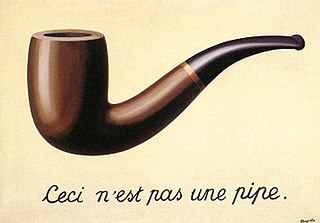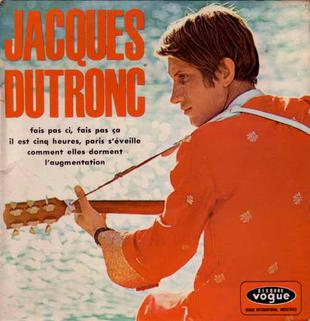
Serge Reggiani was an Italian-French actor and singer. He was born in Reggio Emilia, Italy, and moved to France with his parents at the age of eight.

The Treachery of Images is a 1929 painting by Belgian surrealist painter René Magritte. It is also known as This Is Not a Pipe, Ceci n'est pas une pipe and The Wind and the Song. It is on display at the Los Angeles County Museum of Art.
1986 saw many sequels and prequels in video games, such as Super Mario Bros. 2, along with new titles such as Arkanoid, Bubble Bobble, Castlevania, Dragon Quest, Ikari Warriors, The Legend of Zelda, Metroid, Out Run and R.B.I. Baseball. The year's highest-grossing arcade video games were Hang-On in Japan, Hang-On and Gauntlet in the United States, and Nemesis (Gradius) in London. The year's best‑selling home system was the Nintendo Entertainment System (Famicom) for the third year in a row, while the year's best-selling home video games in Western markets were Super Mario Bros. in the United States and Yie Ar Kung-Fu in the United Kingdom.
Les Temps Modernes was a French journal, founded by Simone de Beauvoir, Jean-Paul Sartre, and Maurice Merleau-Ponty. Its first issue was published in October 1945. It was named after the 1936 film by Charlie Chaplin.
Robert Goldman is a French songwriter. He was born in Paris, the son of Alter Mojze Goldman and Ruth Ambrunn who were Jewish Resistance fighters during the Second World War. He is the younger brother of Jean-Jacques Goldman and half-brother of Pierre Goldman.
Delcourt is a French publishing house that specializes in comics and manga founded in 1986 through the fusion of the magazines Charlie Mensuel and Pilote. Guy Delcourt, chief editor of the latter, named the new publishing house Guy Delcourt Productions.
Michèle Arnaud, was a French singer, recording artist, and director. She was buried on 18 September 1998 at Montparnasse Cemetery. She is the mother of the singer Dominique Walter and the photographer Florence Gruère.

Frédéric Diefenthal is a French actor and director.
Jean-Jacques Gautier was a French theatre critic, novelist and essayist. A Norman via his father and a champenois via his mother, he was elected a member of the Académie française in 1972.
André Roanne was a French actor. He began his career playing in short films, and acted in 91 films in total, most notably those of Fernandel. Most of his films were French; he did, however, also appear in German and Italian works, especially co-productions with French companies. He also served occasionally as an assistant director, screenwriter, technician, and film editor.
Jean Vautrin, real name Jean Herman, was a French writer, filmmaker and film critic.

"Il est cinq heures, Paris s'éveille" is the sixth single by the French singer-songwriter Jacques Dutronc, released in 1968. It appears on his second self-titled album.

Fascination is an erotic thriller graphic adventure game developed by Tomahawk and published by Coktel Vision for the Amiga, Atari ST, and MS-DOS in 1991.
André Thirion was a French writer, a member of the group of surrealists, a theorist and political activist.

The VG5000μ is a computer created by Philips in 1984. It was manufactured in Le Mans by Radiotechnique (RTS) and marketed under the Philips, Radiola and Schneider brands.

Ronan Leprohon was a 20th-century French Breton academic historian, politician, and lifelong Breton nationalist.

Élodie Nassar, known as MissJirachi, is a French YouTuber specialized in the subject of Pokémon.

Élodie Frenck is a Peruvian–Swiss–French actress, born 31 July 1974 in Lausanne, Switzerland. She is known for playing the character of Marlène Leroy in the French TV series Les Petits Meurtres d'Agatha Christie.
Jennifer Lufau is a gamer, and an expert in digital marketing, who is based in Paris, France.









